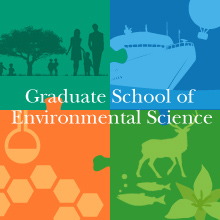EES Seminar (July 19, 2016) by Prof. Hongbin Liu, Hong Kong University of Science and Technology
2016-07-062016年7月19日(火)午後2時からD101室にて、H28年度北海道大学招へい教員として滞在中のHongbin Liu教授(香港科技大学)による研究院アワー(EESセミナー)を開催致します(下記参照)。奮ってご参加願います。
鈴木光次(地球圏科学部門)
Prof. Hongbin Liu (Hong Kong University of Science and Technology) as a visiting professor of Hokkaido University is going to give a seminar at Rm. D101 from 2 pm, 19 July 2016 (see below). Your attendance would be greatly appreciated.
Koji Suzuki (Division of Earth System Science)
—
EES Seminar
Date: Tuesday, 19 July 2016, 14:00–15:30
Venue: Room D101
Speaker: Prof. Hongbin Liu (Hong Kong University of Science and Technology/Hokkaido University)
Title: Geographical niche differentiation of Synechococcus communities in the Western Pacific Marginal Seas
Chair: Koji Suzuki (Division of Earth System Science)
Abstract: Synechococcus, a cosmopolitan pico-unicellular cyanobacteria, are important primary producers in marine environments. They are both highly phylogenetically and phenotypically diverse. In order to draw a map about the abundance, pigment phenotypic diversity (revealed by cpe genes), and phylogenetic diversity (revealed by rpoC1 gene) of Synechococcus in the western Pacific Ocean and its marginal seas, we collected surface samples in eight cruises from 2009 to 2014, and studied both the phylogenetic types and phenotypes (pigment genetics) of Synechococcus using 454 pyrosequencing and clone library construction and sequencing methods. Synechococcus abundance in this vast area was also determined through flow cytometric analysis. Our results show that the abundance and genetic diversity of Synechococcus were the highest in the East China Sea. Clades I and II were the dominant lineages in the western Pacific Ocean surface waters. We reiterated the global distribution pattern of these two lineages. Clade I Synechococcus may contain six different subclades corresponding to cold and warm water ecotypes. Clade IV Synechococcus were rarely found in this study, though it often co-occurs with clade I. Clade III, VI, VII and S5.3 were also the major Synechococcus lineages in the warm waters of the western Pacific Ocean, but with relatively narrower niche than clade II. There is a latitudinal niche partitioning in Synechococcus pigment phenotypic compositions. Pigment type 3a was abundant in the ECS, while type 3c and/or type 3dB was largely dominant at the SCS. Most strikingly, chromatic acclimaters of the 3dA type constituted almost the sole pigment type in the western subarctic Pacific and the Bering Sea. Our results also showed that Synechococcus communities with a similar phylogenetic composition could have distinct pigment phenotypic compositions, suggesting that the PE-encoding genes have undergone multiple lateral transfers between Synechococcus lineages during the evolution of this genus. The GC and GC3 contents of cpe genes of Synechococcus communities in the ECS are higher than those in other geographic locations, indicating that the pigment genes in the ECS suffered the least pressure. Our results show a geographical differentiation of Synechococcus phylogenetic and pigment phenotypic compositions in the western Pacific Ocean, which can be explained by the adaptation of different clades/types to environmental conditions.













